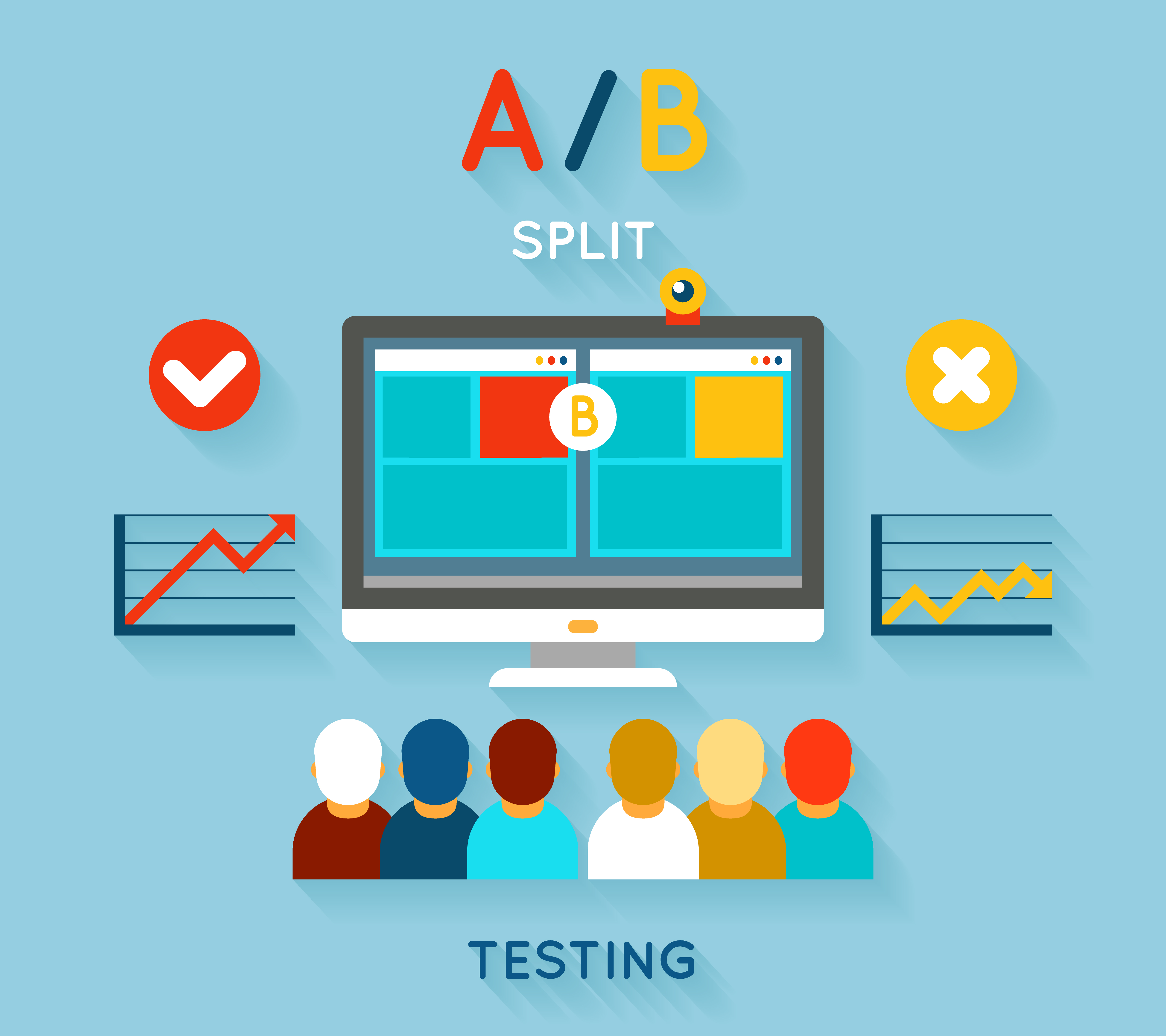A/B Testing: Driving Data-Driven Decisions for Enhanced UX and Business Growth
Introduction
Consumers today prioritize more than just price, quality, and technical specifications when making purchasing decisions. They increasingly gravitate towards platforms that cater to their individual needs and provide a seamless user experience (UX). This shift in consumer behavior places immense pressure on brands to constantly improve their offerings and elevate UX across all touchpoints.
Fortunately, a scientific approach empowers UX designers to understand what works best for any given scenario. Carefully designed digital marketing experiments enable them to gain a deeper understanding of users and make necessary optimizations to improve the overall UX. One of the most effective tools for this is A/B testing, a quantitative method for determining which elements perform best on a platform. By creating multiple versions of a web page or element and analyzing user interaction with each, brands can make data-driven decisions to optimize their platform for maximum engagement.
This guide will explore the concepts of A/B testing, user experience, and user engagement, and demonstrate how A/B testing can be used to improve all three1 . We will also discuss popular A/B testing tools and provide practical tips for implementing successful A/B tests.
What is User Experience?
User experience (UX) encompasses the entire journey a user takes when interacting with a product, platform, or service. It goes beyond functionality and aesthetics, focusing on the emotional and cognitive impact of every touchpoint. A positive UX is intuitive, efficient, and enjoyable, fostering user satisfaction and loyalty.
Here are some key aspects of UX:
- Usability: Can users easily navigate and complete tasks on the platform?
- Accessibility: Is the platform accessible to users with different abilities?
- Information architecture: Is the content organized logically and easy to find?
- Visual design and aesthetics: Is the platform visually appealing and consistent with the brand identity?
- Emotional connection: Does the platform create a positive and engaging experience for users?
By focusing on these aspects, brands can create a UX that not only meets users' needs but also exceeds their expectations.
Understanding User Engagement

User engagement refers to the level of interaction users have with specific elements on a platform. This could include clicking on buttons, submitting forms, watching videos, or engaging in any other activity that demonstrates active participation. Measuring user engagement provides valuable insights into user behavior and helps brands identify areas for improvement.
Here are some key metrics for measuring user engagement:
- Click-through rate (CTR): The percentage of users who click on a specific element, such as a button or link.
- Conversion rate: The percentage of users who complete a desired action, such as making a purchase or signing up for a service.
- Time spent on page: The average amount of time users spend on a specific page or section.
- Bounce rate: The percentage of users who leave a page immediately after entering.
By analyzing these metrics, brands can gain a deeper understanding of how users are interacting with their platform and identify areas where they can improve user engagement.
What is A/B Testing?

A/B testing, also known as split testing, is a powerful quantitative method used to evaluate which elements within a platform perform best. This approach involves creating multiple versions (A and B) of a specific element, such as a webpage layout, text font size, call-to-action button, or image placement, and then exposing these variations to a segmented user base. By analyzing user interactions with each version, brands can gather valuable data to optimize their platform for maximum engagement and user experience (UX).
A prime example of the transformative power of A/B testing is showcased by Kommunicate2 , a SaaS platform offering customer service solutions. By testing different call to action (CTA) button designs, Kommunicate achieved a remarkable 25.53% increase in clicks and a 12.5% growth in free trial sign-ups, demonstrating the significant impact of seemingly minor changes on user behavior and conversion rates.
Here are some benefits of A/B testing:
- Data-driven decision making: A/B testing eliminates guesswork and provides objective data to inform UX decisions.
- Improved user experience: By testing different variations, brands can identify and implement features and designs that users prefer, leading to a more enjoyable and engaging experience.
- Increased conversion rates: A/B testing can help identify elements that are hindering conversions and optimize them for better results.
- Continuous improvement: A/B testing is an iterative process that allows brands to continually refine their platform based on user feedback and data insights.
By incorporating A/B testing into their UX strategy, brands can gain a competitive edge, fostering long-term customer relationships and ultimately achieving their business goals.
A/B Testing Tools
I have personally used VWO and Optimizely to publish various versions of a web page. Implementing these tools was very simple and didn't require much expertise. Even creating different versions for a web page using these platforms was straightforward and only required basic knowledge. We used A/B testing to decide which call to action (CTA) to use for the "Contact Us" button on our website. We employed a basic A/B testing feature within the website personalization engine to identify the most effective CTA.
How does A/B Testing help?

While individual user preferences vary based on diverse experiences and knowledge sources, relying solely on subjective opinions or theoretical knowledge can be insufficient for scaling and optimizing user experience. A/B testing bridges this gap by capturing data-driven insights from targeted consumers interacting with your platform. This provides concrete evidence to objectively evaluate and implement changes that demonstrably enhance user engagement and satisfaction.
Practical Tips for Implementing Successful A/B Tests
Define Clear Goals and Objectives
Before conducting any A/B test, it's crucial to define clear goals and objectives. What do you aim to achieve with the test? Do you want to increase conversion rates, improve user engagement, or test the effectiveness of a new design feature? Clearly defined goals will help you determine the appropriate metrics to track and measure success.
Choose the Right Elements to Test
Not every element on your website is worth testing. Focus on elements that have the potential to significantly impact your goals. Consider testing elements such as:
- Call-to-action buttons: The design, text, and placement of your CTAs can significantly impact click-through rates.
- Headline and subheadings: These elements capture user attention and influence their decision to stay on a page.
- Form design: Complex or lengthy forms can discourage users from completing them.
- Product page layout: The arrangement of product information and images can affect user engagement and purchase decisions.
Create Relevant Variations
Once you've chosen the element to test, develop variations that are significantly different from each other. This allows you to isolate the impact of the changes and accurately measure their effectiveness.
Segment Your Audience
To ensure reliable results, segment your audience and expose each segment to only one variation. This helps control for external factors and provides a clearer picture of how different user groups respond to each variation.
Set a Statistical Significance Threshold
Before starting your test, determine the minimum statistically significant difference you need to observe between variations to call a test a success. This helps avoid drawing false conclusions due to random chance.
Monitor and Analyze Results
Once your test is running, monitor it closely and analyze the data regularly. Pay attention to key metrics like click-through rates, conversion rates, and time spent on page. Use statistical analysis tools to determine the statistically significant differences between variations.
Implement the Winning Variation
After analyzing the results, identify the variation that performed best. Implement this variation across your platform and continue monitoring its performance.
Rinse and Repeat
A/B testing is an ongoing process. Once you've implemented a winning variation, identify new elements to test and continue optimizing your platform for maximum user experience and engagement.
Conclusion
By embracing A/B testing and leveraging its powerful capabilities, brands can gain valuable data-driven insights, optimize their platforms for user engagement, and ultimately achieve their business goals. Remember, A/B testing is an iterative process that requires continuous learning and experimentation. By following these practical tips and incorporating A/B testing into your UX strategy, you can create a user-centric platform that drives long-term customer satisfaction and growth.



